What Are The Types of Hearing Aids




Hearing aids are essential devices for individuals with hearing loss, enhancing their ability to engage in daily activities and communicate effectively. Over the years, technological advancements have led to the development of various hearing aid types, each designed to cater to different levels of hearing loss, preferences, and lifestyles. In this essay, we will explore the different types of hearing aids along with their advantages and disadvantages.
Behind-the-Ear (BTE) Hearing Aid
The Behind-the-Ear (BTE) hearing aid is a common and easily recognizable style. It has an external part that sits behind the ear, connected by a small tube to a custom-made earmold that fits inside the outer ear and partially in the ear canal. BTE hearing aids are larger and often used by people with more severe hearing loss. The earmold is shaped to fit the user’s ear, and it connects to an earhook, which helps direct sound from the device into the ear. The earhook sits at the top of the ear.
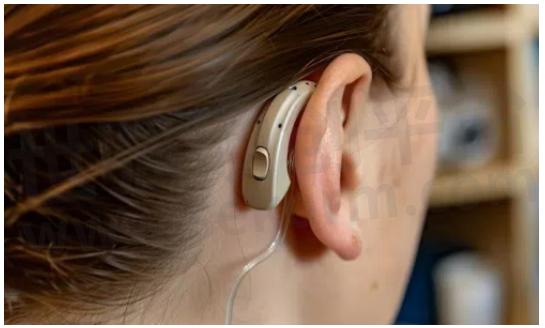
Fig.1
Advantages
●Versatility: Suitable for a wide range of hearing losses.
●Durability: Less prone to moisture damage due to the location behind the ear.
●Ease of Handling: Larger size makes them easier to manipulate.
Disadvantages
●Visibility: More noticeable compared to other types.
●Comfort: May feel bulky for some users.
●Wind Noise: Prone to interference from wind.
Receiver-in-Canal (RIC) Hearing Aid
Receiver-in-Canal (RIC) hearing aids are an improved version of the traditional BTE devices. They look similar, with part of the device behind the ear and a receiver (or speaker) placed directly in the ear canal. This design makes RIC hearing aids less noticeable and better at delivering sound. RIC devices offer different fitting options, like open or closed tips, or a custom-fit earmold, to suit individual needs.
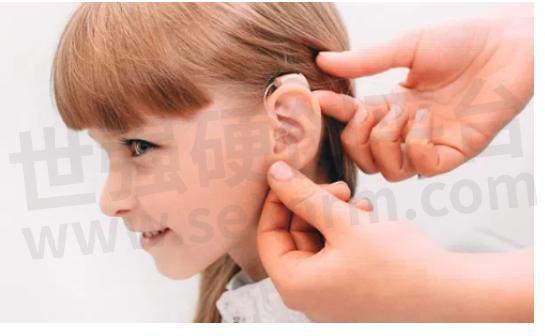
Fig.2
Advantages
●Discreet Design: Smaller and less noticeable than BTE aids.
●Sound Quality: Offers better sound quality and reduced feedback.
●Comfort: Generally more comfortable due to the smaller size.
Disadvantages
●Maintenance: Receivers can be prone to earwax and moisture damage.
●Limited Power: May not be suitable for severe hearing loss.
●Visibility: While less visible than BTE, still noticeable.
In-the-Ear (ITE) Hearing Aid
In-the-Ear (ITE) hearing aids are self-contained devices that fit inside the outer ear and extend into the ear canal. Unlike BTE models, ITE hearing aids don't have a separate piece behind the ear, making them more stable and easier to manage for some users. ITE hearing aids have come a long way since Ronald Reagan made them popular in the 1980s. Today’s versions are more advanced, offering better sound quality and more convenient features. They are a good option for those who prefer a single, compact device without any external components.
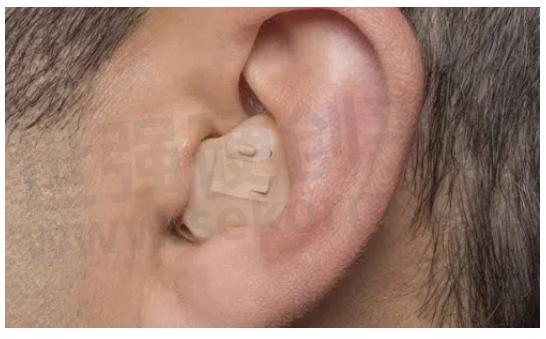
Fig.1
Advantages
●Ease of Use: Larger controls make them easier to handle and adjust.
●Less Feedback: Generally less feedback than smaller models.
●Natural Sound: Provides a more natural sound experience.
Disadvantages
●Visibility: More noticeable than smaller hearing aids.
●Comfort: Can be uncomfortable for some users due to the in-ear fit.
●Wind Noise: Can be susceptible to wind interference.
In-the-Canal (ITC) Hearing Aid
In-the-Canal (ITC) hearing aids are small devices that fit snugly inside the ear canal, making them almost invisible from the outside. They are more compact than In-the-Ear (ITE) models and are a good choice for active individuals because they stay securely in place during physical activities.
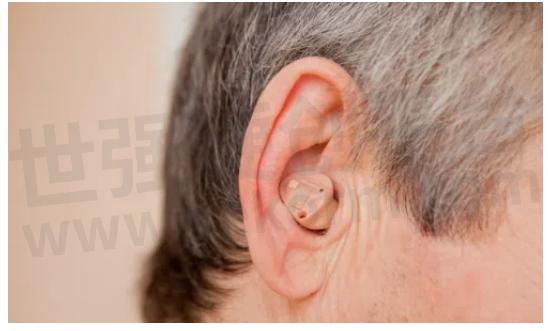
Fig.4
Advantages
●Discreetness: Less visible than ITE aids.
●Natural Sound: Provides good sound quality.
●Comfortable: Custom fit offers comfort.
Disadvantages
●Smaller Controls: Can be challenging to handle and adjust.
●Limited Features: Fewer features and power compared to larger models.
●Battery Life: Smaller batteries require frequent replacement.
Completely-in-Canal (CIC) Hearing Aid
Completely-in-Canal (CIC) hearing aids are tiny devices that fit entirely inside the ear canal, making them nearly invisible. Depending on how deep they are placed, some CIC devices are fitted by a hearing professional and have long-lasting batteries, while others can be inserted and removed by the user using a pull tab or a special tool. CIC hearing aids are smaller than ITC models and are ideal for people with mild to moderate hearing loss and normal ear canal size. Their deep placement provides extra waterproofing, with some models even suitable for swimming.
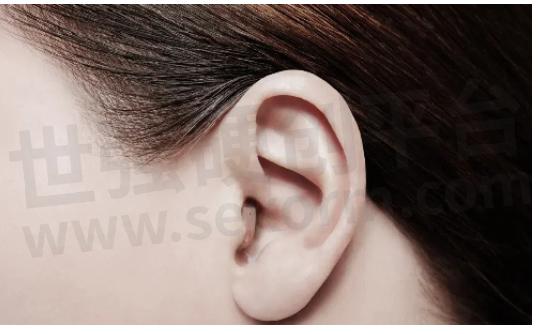
Fig.5
Advantages
●Discreet Design: Nearly invisible, making them appealing for those who prefer a low profile.
●Natural Sound: Enhanced sound localization due to their placement in the canal.
Disadvantages
●Maintenance: Can be prone to earwax buildup and are difficult to handle.
●Limited Features: Generally, fewer features and power compared to larger aids.
Invisible-in-Canal (IIC) Hearing Aid
Invisible-in-Canal (IIC) hearing aids are very small devices that fit deep inside the ear canal, making them almost invisible from the outside. They are ideal for people who want the most discreet hearing aid possible. Like CIC models, IICs are tiny, but IICs are inserted further into the ear canal, which enhances their invisibility. Some IIC devices can only be placed or removed by a hearing professional and may not be suitable for swimming. The main difference between IIC and CIC hearing aids is that IICs are more compact, which can make them harder to handle, especially for battery changes.
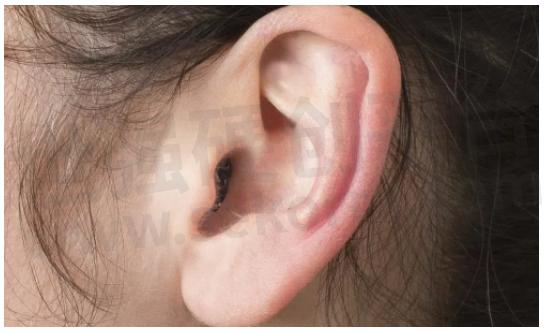
Fig.6
Advantages
●Maximum Discreetness: Almost invisible to others.
●Comfort: Minimal visibility can make them more comfortable for some users.
●Natural Sound: Offers a natural listening experience.
Disadvantages
●Size: Their small size can make them difficult to handle and adjust.
●Limited Power: May not be suitable for severe hearing loss and can have fewer features.
●Durability: Fragile due to small size.
Conclusion
Choosing the right hearing aid depends on individual needs, lifestyle, and degree of hearing loss. While BTE and RIC offer powerful amplification and durability, ITE, ITC, CIC, and IIC provide more discreet options with varying degrees of comfort and features. Understanding the advantages and disadvantages of each type is crucial in making an informed decision to enhance one's quality of life. As a global leading lipo battery manufacturer, Grepow offers custom rechargeable lithium-ion coin cell, shaped pouch lipo battery cell and shaped metal casing lipo battery cell to meet the needs of all knids of medical device applications.
- |
- +1 赞 0
- 收藏
- 评论 0
本文由三年不鸣转载自Grepow Official Website,原文标题为:What Are The Types of Hearing Aids,本站所有转载文章系出于传递更多信息之目的,且明确注明来源,不希望被转载的媒体或个人可与我们联系,我们将立即进行删除处理。
相关研发服务和供应服务
相关推荐
Prescription vs OTC Hearing Aids: What‘s the Difference?
If you value convenience, long-term savings, and eco-friendliness, rechargeable hearing aids could be the better choice. However, if you prefer a lower upfront cost and the simplicity of changing batteries without worrying about charging, disposable battery models might be more suitable. Both options are available in prescription and OTC hearing aids, so you can make a choice that best suits your lifestyle and hearing needs.
【技术】格瑞普解析刀片电池的特点和优势
关于刀片电池相信各位一定有所耳闻,那么什么是刀片电池?它有什么特点和优势呢?本文格瑞普将为您进行介绍。
【技术】格瑞普解析导致锂电池电芯低容的原因有哪些
容量是电池的第一属性,锂电池电芯低容也是样品、量产中经常遇到的问题,在遇到低容问题后要怎么立刻分析出原因呢,本文格瑞普就来给大家介绍一下导致锂电池电芯低容的原因有哪些。材料的匹配特别是负极与电解液的匹配对电芯容量的影响尤为重大。
格瑞普电池选型表
格瑞普锂电池,磷酸铁锂电池,高压锂电池,镍氢电池,低温锂电池,快充电池,三元锂电池选型表。倍率(C):1~50C,容量(mAh):48~40000mAh,电压:1.2V~4.35V
|
产品型号
|
品类
|
倍率Rate(C)
|
Thickness(mm)
|
Width(mm)
|
Length(mm)
|
容量(mAh、mA)
|
Voltage(V)
|
|
CP6431122-R1A
|
三元锂电池
|
1C
|
6.4mm
|
31mm
|
122mm
|
3000mAh
|
3.7V
|
选型表 - 格瑞普 立即选型
2024无人机竞速联赛柯桥站,格瑞普R-LINE 5.0系列TATTU电池大放异彩,成为众多飞手信赖的选择
格瑞普研发生产的多款TATTU电池大放异彩,尤其是R-LINE 5.0系列的1550mAh、1480mAh及1400mAh型号,成为众多飞手信赖的选择。资格赛中,Minjae、王淼等一众顶尖飞手凭借卓越技术和装备优势,纷纷展现出非凡实力。
【经验】格瑞普解析MSD及MSD电池系统的作用
MSD电池系统作为一种高能量密度、长寿命、环境友好的新型电池系统,在电子设备领域具有广泛的应用前景。它的独特优势使得电子设备可以更长时间地保持高效工作,给用户带来更好的使用体验。同时,它的环保性能也符合当今社会对绿色可持续发展的要求。
揭秘格瑞普电芯:从电池原料到成品的制作工艺
格瑞普作为电池领域的先锋品牌,其技术部汇聚了超过200位资深工程师与技术精英,致力于电池技术的尖端研发与创新。公司配备了全面的电池产品测试与验证设备,确保每一款产品的卓越性能,更在产品研发、生产制造及技术创新上不断突破,为市场带来了一系列高性能、高安全性的电池产品。在生产层面,格瑞普坐拥四大现代化厂区,依托先进设备,能够灵活生产及定制包括镍氢电池、聚合物锂电池。
格瑞普负40度还能正常工作的磷酸铁锂电池,尺寸灵活,可进行专业化定制
深圳市格瑞普电池有限公司研发出了负40度还能正常工作的磷酸铁锂电池,一举打破了市场上的空缺,值得一提的是这负40度跟市场上大部分低温电池(可定制)产品不一样,格瑞普低温电池是实打实的低温。
电池pack厂格瑞普的pack原则
pack通过柔性(热缩膜或胶带),壳体或支架,辅以胶水,螺丝,卡扣或超声焊接等工艺,选配合适的保护板(BMS),做好绝缘与散热来实现电芯的多串并方案,由此满足终端客户的电气性能,寿命与环境使用要求。Pack是电芯实现使用价值的手段。今天就来看一下电池pack厂格瑞普的pack部分原则
【元件】格瑞普钢壳异形电池全新上市,为未来智能产品创新提供助力
格瑞普带着全球领先的钢壳异形电池产品和服务再次来到大众的视野!随着科技的进步,智能可穿戴设备愈发增多,且对产品空间的需求更加严格;因此,深圳市格瑞普特推出全新的,钢壳异形电池,为新时代的AI产品增加助力!
【技术】格瑞普解析无人机电池循环次数是多少及如何计算?
近年来随着短视频的兴起,无人机也越来越流行了,但很多朋友都对无人机电池使用寿命短而感到苦恼,因此很多小伙伴都关心无人机电池循环次数,想了解无人机电池循环次数是多少及怎么样计算无人机电池循环次数?本文格瑞普将为你详细介绍。
【经验】格瑞普解析锂电池出现鼓包的原因
锂电池的安全性有时候会得不到保证,另外如果使用不当或者是制作水平有限的话还是有一定的安全隐患的,就比如锂电池鼓包,那么锂电池为什么会出现鼓包现象呢?今天格瑞普来为大家讲解。
格瑞普无人机智能电池Tattu 3.0&Tattu 4.0全面对比分析
在无人机领域,智能电池的性能直接关系到无人机的飞行效率、安全性和续航能力。格瑞普电池自主研发生产的Tattu 3.0与Tattu 4.0作为两款备受瞩目的无人机智能电池,各自在结构设计、电芯性能、安全保护及充电效率等方面展现出了不同的优势。本文中格瑞普来为大家全面对比分析二者,希望对各位工程师朋友有所帮助。
格瑞普推出磷酸铁锂电池,循环寿命可达2000+次,电压、形状及容量可按需定制
磷酸铁锂电池厂家格瑞普的创新技术很好的实现了磷酸铁锂电池的高功率性能,也延长了电池的使用寿命。格瑞普提供磷酸铁锂电池电芯定制+电池管理系统(BMS)+结构设计的一体化电池系统定制服务,使用专有的电池原料配方,耐温性能高,高能量密度比。
【技术】格瑞普为您解析PERC电池的概念、优势、缺点
PERC电池,意思是“钝化发射器和后部接触 “的太阳能电池,被称为PERC太阳能电池片,是从常规铝背场电池(BSF)结构自然衍生而来,现在也是制作太阳能板的一种方式和选择。
电子商城






































































































































































































登录 | 立即注册
提交评论